justinelong-indiefilms
5 posts
Don't wanna be here? Send us removal request.
Text
Independent Films at the Oscars: A closer look at Hollywood’s prejudice for Best Picture (ft. “Moonlight” & “The Shape of Water”
The Oscars are one of, if not the, biggest nights for cinema. Every filmmaker's dream is to hold an award, thank the academy, and be remembered for their amazing achievements. Hollywood places a lot of pressure on these awards because this is where movies gain the most attention. Even if you are into sports, business, or music, you have heard of the Oscars. Throughout this semester, we have touched on what an independent film is, who makes them, and what they contain. It is a niche category of film that most people would not consider mainstream. Indie films cover different topics, take taboo issues head-on, and do it with a low budget. With long-standing traditions at the Oscars, it is hard to break the seal of Hollywood vs. Indie and have your movie become a household name. Every year, the last award to be given out is Best Picture. This category combines all aspects of film and takes the movie as a whole into account. When comparing nominees, there are certain things the Academy looks for. In this blog, we will be looking closely at two indie films that won Best Picture and compare them as to why they were even considered for the category. We will also be discussing how independent films make award shows and how Hollywood has been against them for years.
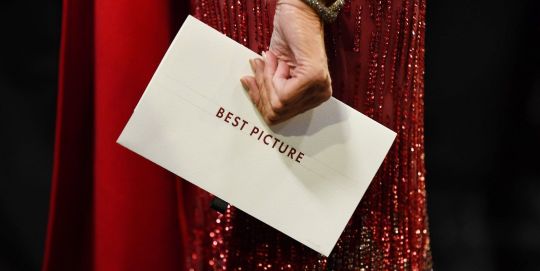
In 2017 and 2018, two very different films went on to take the title of Best Picture and are now critically acclaimed films. Moonlight and The Shape of Water are both good examples of well-made cinema. They contain unique characters and storylines that captured the hearts and minds of audiences across the world. To start, everyone knows the infamous incident of La La Land accidentally winning Best Picture. Never in Oscar history has that occurred, but everyone was in complete shock when the news was announced. Warren Beatty and Faye Dunaway were handed the wrong card and read out that La La Land had won without realizing their mistake. The whole audience applauded and waited a full two minutes before understanding there was a problem (Robehmed, 2017). Moonlight not winning (at first) was just another loss for the indie film community. It was expected for them not to win, but why? This fiasco was just a representation of how Hollywood shuns taboo subjects and the films that capture them.
youtube
Moonlight is a low-budget film that goes through the life of a black man struggling with sexuality and the burdens of his world. The movie follows him through three chapters, one where is he 9 years old, the second he is a teenager, and the last he is an adult. Chiron, the main character, dives into his black masculinity and tries to understand the path of his life. A review at the time comments that “all the cliches of the coming-of-age movie have been peeled away, leaving something quite startling in its emotional distress” (Rooney, 2016). A24, a popular production studio, released the film not expecting its success. The LGBTQ+ community welcomed it with open arms and discussions about black queerness in film re-opened. It seemed like an homage to the New Queer era of indie films. Hollywood is very traditional. Most companies that make movies fund films they know people will like, starring white leading characters in a world with nonexistent racism or homophobia. This long history of exclusion made Moonlight’s victory that more special (Mckinnon, 2017). People expected La La land to take the win, a nostalgic film that paid tribute to old cinematic techniques, but Moonlight was a “film about seeing people different from you and understanding them” (Whip, 2017). After the switch-up was figured out, the team from Moonlight could finally take a breath and enjoy what was theirs. This movie opened the doors for a lot of filmmakers to explore new subjects that normally do not get Oscar recognition.
youtube
The Shape of Water won Best Picture just a year later in 2018, with a completely different style and take on movie making. The interesting plot captures the life of a mute woman who falls in love with a “human fish man” in 1962. This film was given a huge budget of $20 million and stars Hollywood favorites such as Octavia Spencer, Richard Jenkins, and Sally Hawkins. It was given all the right elements to win and sweep the Oscars, which it did. Variety wrote that it was “a ravishing, spilling artistry” film with “empathy and sensuality coming from every open pore” (Lodge, 2017). Although this blog is in favor of Moonlight and the small independent moviemakers looking to make it big, the beauty of The Shape of Water cannot be ignored. It does not fall strictly under the independent category due to its budget and production company, but it makes strides toward a more inclusive workspace, highlighting a black leading supporting actress and a Latino director (Wilkinson, 2018). It was the most nominated film at the Oscars, and it also won Production Design, Original Score, and Best Director. The cinematic techniques employed in a strange but beautiful relationship make this film one of a kind.
youtube
youtube
The directors both had similar visions in bringing a certain picture to life. In an interview with Moonlight director Barry Jenkins, he said that instead of starting an intellectual conversation about masculinity, he wanted to show it. Jenkins has directed multiple indies before such as Medicine for Melancholy, which also followed two black protagonists in a dream-like world addressing racial tension in society. The films he creates are made to be shared, and it was wonderful Moonlight gained a wide audience (“Q on CBC” Youtube.com, 2016). In a similar sense, director Guillermo del Toro also desired to break boundaries. He said in an interview with Peter Travers that for filmmakers every film feels like a biography, and the moment he decided to film Shape of Water was very personal to him, even though most would see it as an “unsafe bet” (Peter Travers, YouTube, 2017). To viewers and voters, smaller independent features surprised most people in the nominations, but when Shape of Water arrived, it seemed like a perfect traditional fit. What makes a movie considerable for Best Picture and why do independent films have a harder time meeting these credentials? The answer lies within the long prejudice of Hollywood and connects with the two films we just discussed.

Every year, members of the Academy (workers in the American theatrical motion picture industry) watch and take in all the films nominated for Best Picture. According to previous research done on the nominees and wins, some people believe that there are some tell signs if a movie will receive an Oscar. The film typically must have a nomination for Best Director and/or Best Actor/Actress (Micki, 1990). For both Moonlight and Shape of Water, this was the case. For small independent movies, there are typically unknown actors or people just starting. There is not enough in the budget to hire big names. As a result, they might not be recognized by the Academy until later in their career, same with directors. Besides the logistics, Hollywood has received backlash for years asking Academy members to recognize films that not only have great storytelling and technique but honor minority communities. In 2006, Brokeback Mountain was expected to win Best Picture. This movie was groundbreaking at the time, showing two cowboys who were heterosexual. It would have been for the indie community at the time, but unfortunately, the movie Crash won to everyone’s surprise. Audiences began to criticize the Oscars for not looking outside their “gated communities”. In addition, Crash had some leverage because it began to utilize DVDs as promotion, which was fairly new at the time. Depending on the distribution, indie films are typically shown at film festivals or produced locally. There is a harder time gaining access to bigger resources (Stone, 2006).
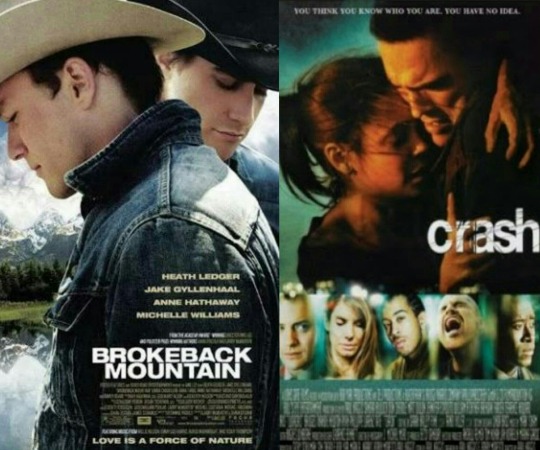
Interviews with Academy members as well show that they sometimes can be brutally honest when it comes to reviewing the films every year. The Hollywood Reporter in 2015 ran a series with voters who pick the Oscar winners. Racist and homophobic comments were made by anonymous people saying, “if it were directed by a white male, I don’t think people would be raving about it as much” and “if a movie has black people in it, am I supposed to just vote for it?” (Siede, 2015). Not all independent films are correlated with minority groups, but most in the category make a point in steering away from traditional themes and tell stories that matter. For example, Moonlight’s victory was important because queer people of color found it difficult to celebrate the victories of any queer film when their own lives were excluded (Mckinnon, 2017). In 2021, a lot of mainstream, commercially minded movies took a step back and waited to release film until after the pandemic. It was the time for indie films to shine and they did. Nomadland won Best Picture and graciously took other awards as well. Taking a closer look at Moonlight and The Shape of Water gave us a better understanding of what Hollywood is looking for regarding Best Picture. It also showed that the Oscars are heading in the right direction and making changes so that moviemakers who want to create a difference have the opportunity. Until the next Oscars, make sure to support indie films at theatres and streaming services available to you.
Lodge, G. (2018, March 12). Venice Film Review: 'The Shape of Water'. Variety. https://variety.com/2017/film/reviews/the-shape-of-water-review-1202543729/.
Mckinnon S. (2017). With Moonlight’s Oscar win, Hollywood begins to right old wrongs. The Conversation Journal (1-5) 113037
Robehmed, N. (2017, February 27). The Full Story Behind The 'La La Land' And 'Moonlight' Oscars Mix-Up. Forbes. https://www.forbes.com/sites/natalierobehmed/2017/02/27/the-full-story-behind-the-la-la-land-and-moonlight-oscars-mix-up/?sh=38419bba2298.
Rooney, D. (2016, September 13). 'Moonlight': Telluride Review. The Hollywood Reporter. https://www.hollywoodreporter.com/news/general-news/moonlight-telluride-review-923754/.
Whip, G. (2017, February 27). Gold Standard: How 'Moonlight' won the Oscar for best picture. Los Angeles Times. https://www.latimes.com/entertainment/envelope/la-et-mn-oscars-2017-gold-standard-20170226-story.html.
Moonlight director Barry Jenkins on changing the perception of manhood. (2016). YouTube. https://youtu.be/R7_GimSKeiw.
Micki, E. (1990) Patterns in Choosing Oscar-Winning Best Pictures, Journal of Popular Film Television, Academy of Motion Picture Arts & Sciences, 10.1080/01956051.1990.9943643
Wilkinson, A. (2018, March 5). Why The Shape of Water is a natural choice for Best Picture. Vox. https://www.vox.com/2018/3/5/17079236/shape-of-water-best-picture-oscars-why-won.
YouTube. (2017). Director Guillermo del Toro talks the making of 'The Shape of Water'. YouTube. https://www.youtube.com/watch?v=otts5vS_f8o.
Stone, Alan A. "Best Picture: How Far Will Hollywood Go?" Psychiatric Times, vol. 23, no. 10, 2006, p. 50.
Tzioumakis, Y. (2017). American Independent Cinema. Edinburgh University Press.
0 notes
Text
Coming of Age in the New Generation: Independent Young Adult Films in the 2010s
FILM FESTIVAL LINEUP

High school is a hard struggle that everyone can relate to. The teenage years have been a popular theme in film for a long time from The Breakfast Club, to 13 going on 30, audiences know the stereotypical characters and plotlines that come with the trope of a coming-of-age movie. Back in the 1980s and 1990s, indie movies that dealt with teenagers focused on sex and aspects of exploitation films. This is what was selling at the time and it worked, but as people and society changed, so did the independent film industry. Coming of age cinema in the 2000s dealt with new challenges that came with being a young adult in the newest age. Four films that capture the essence of it are Edge of Seventeen (2016), Booksmart (2019), Bling Ring (2013), and Me, Earl, and The Dying Girl (2015). These stories have their own loveable characters and quirky moments, but they all share some common themes. These indie projects focus on the rise of social media and how an online space can ruin relationships and reputations. They also emphasize the social hierarchy and constant anxiety of partying, fitting in, and making friends. Finally, even though there are some differences, they still pay tribute to those blockbusters coming of age movies we all know and love. Independent films combine some Hollywood themes with specific characters and some more darker ideas. This creates a more relatable world for teenagers across the country.
Edge of Seventeen (2016)
youtube
This movie follows Nadine, a 17-year-old struggling to get through high school after losing all her friends and having family issues. She also gets herself in trouble by accidently posting on social media about her fellow students. The movie touches on suicide, mental illness, and how a lot of people are tone deaf about the subjects. One review from The Guardian said that “it’s depressingly rare for a director to look beyond the teenager as a highly marketable brand and convincingly tap into the mess of insecurities, contradictions and swirling, unfocused surges of anger” (theguardian.com). I really connected with this movie and thought it was sensitive to the complicated topics at hand but paired with loveable characters. There were also great cinematic techniques overall.
Booksmart (2019)
youtube
Olivia Wilde’s directing debut became an instant classic once it hit theatres. It follows two best friends who have followed the rules and lived by the books ever since they were kids. As graduation approaches, they feel like they should explore the rebellious side of high school and take after their peers. The plot development involves them figuring out their sexuality, drinking and drugs and overall finding themselves. A review at the time said that “it’s adorned with verbal whimsy and brought to life by a vibrant cast but its substance is scantly developed, it’s clear and simple premise dismayingly oversimplified” (Brody, 2019).
Bling Ring (2013)
youtube
With this film, A24 took a bunch of young Hollywood actors (Emma Watson, Israel Broussard, etc.) and put them in a crazy storyline that was based on a true story. This movie is centered around a group of teens who find secretive ways to break into celebrities’ houses and steal money, jewelry, and anything they can get their hands on. They feel like they are on top of the world and get an adrenaline rush from not getting caught by the police or pretending they are on the “elite” side of society. The director wanted to highlight “not the paralysis of having more than you could possibly want, but rather about the addictive thrills of wanting what you can’t quite have and trying to get it” (Scott, 2013). This ties into the part of coming of age where mistakes are made and sometimes, they could affect your future.
Me, Earl, and the Dying Girl (2015)
youtube
This movie stars a lonely, nerdy guy in high school named Greg (a common theme by now) who finds out that a girl he knows, Rachel, was diagnosed with Leukemia. They soon create a trio with their friend Earl and try to cheer up Rachel during her treatment. It is a witty, heartwarming film that also pokes fun at the cheesy teen rom coms mentioned before in the intro. The boys are young filmmakers and decide to create a home movie made dedicated to Rachel as they try and navigate the highs and lows of how their teen years are coming to an end. Life is coming at them fast, and it is hard to handle as an 18-year-old. The film was presented at the Sundance Film Festival and had an amazing reaction from the audience. According to Rolling Stone, “it’s that sharply funny, touching, and vital” (Travers, 2018).
I personally grew up watching and adoring films like these. Little did I know this genre was a subcategory on its own and had so much more to it than I knew. These independent movies are exposing young adults to face controversial topics and compare them to their own lives. They provide a realistic depiction of high school and going through an important stage in life with a parallel world online. I hope you have the chance to experience one, if not all, the movies in this lineup.
SOURCES:
The Edge of Seventeen review – an abrasive teen you can grow to love. (2016, December 04). Retrieved May 01, 2021, from https://www.theguardian.com/film/2016/dec/04/the-edge-of-seventeen-abrasive-teen-you-can-love
Brody, R. (n.d.). "Booksmart," reviewed: Olivia WILDE'S Toothless teen comedy. Retrieved May 02, 2021, from https://www.newyorker.com/culture/the-front-row/booksmart-reviewed-olivia-wildes-toothless-teen-comedy
Scott, A. (2013, June 13). Twinkly totems of Fame, theirs for the taking. Retrieved May 02, 2021, from https://www.nytimes.com/2013/06/14/movies/a-bling-ring-lusting-after-celebrity-trinkets.html
0 notes
Text
A New England Gem: The Luna Theatre
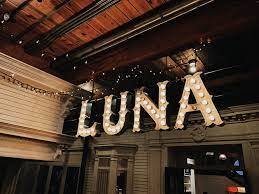
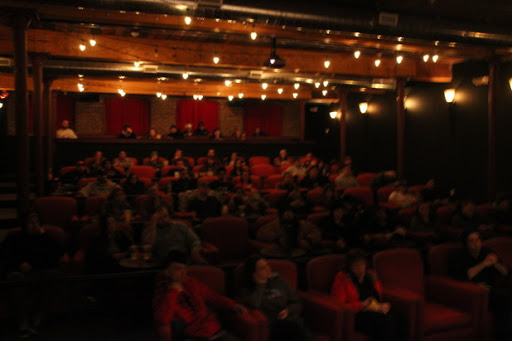
Art House theatres are a dying industry. With streaming platforms available left and right, people do not feel the need to see a movie in a theatre setting. Especially with the pandemic, small businesses are being hit hard with the lack of audiences for their film series and special events. The art house theatres left provide a unique experience for viewers when watching a movie. The Luna Theatre located in Lowell, MA was opened in 2014, finding its place in Mill No. 5, a relatively new entertainment center in the old mills downtown. I personally have been there multiple times, and I can guarantee it is a great time.
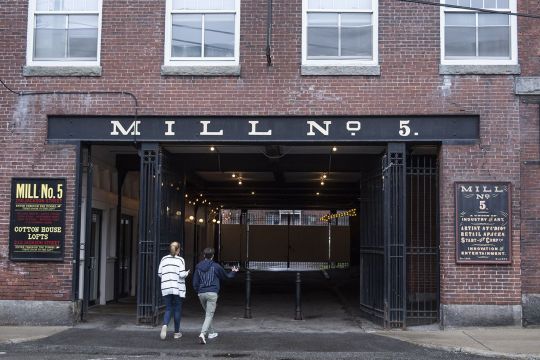
Mill No. 5 is the perfect place for someone trying to find a retro, trendy place to have a night out. The mill was renovated with shops like a record store, a clothing thrift shop, and a 1950s inspired milkshake bar. When looking for a new addition, Jim Lichoulas, the founder, and developer of the building thought Luna would be a perfect fit. “We want people to feel that they are valued and give them a destination place where they can go with friends, bring a date or just come along” (howlmag.com) The theatre itself is directed by Amelia Tucker, who is an artist from Boston. At first, she organized the marketplaces in Mill No. 5, but soon moved on to what she calls her “dream job” at the Luna Theatre. According to their website, The Luna is a crossroads between cinema and other art forms such as live music. The overall vibe is to bring back a nostalgic feeling of going to the movies and provide an experience like no other.

The theatre itself is a hidden gem in the city since there are rarely any entertainment services after dark in Lowell. They advertise as a place that shows first-run independent films, classics, and live events. Currently, the theatre is closed due to COVID-19 and Mill No. 5 just recently opened back up with socially distant and mask wearing guidelines. Before the pandemic, there were certain genres that were highlighted throughout the week. Hopefully after things are looking better, the regular schedule can go back into place. Weirdo Wednesdays are their signature, which is when they show horror, sci-fi, cult or exploitation movies from any era. The tickets are free, and it is first come first serve. They say, “the only twistedly odd and sometimes sinister catch it…you will never know what we are showing until 7:30pm” (lunalowell.com). On Thursdays, there is live music on the theatre stage from local musicians and artists called the “Luna Sessions”. Finally, on weekends, there is a free option for a “Magical Mystery Movie” where the film will always be rated G or PG and families can arrive for a fun night out.
youtube
Overall, the Luna Theatre is a home for new and old independent films, but also blockbuster classics such as Jurassic Park, Back to the Future, etc. I hope to attend soon and watch some more movies that I have not seen, especially after learning so much about the independent film industry.
youtube
0 notes
Text
A Short Guide to the Indie Hipster Film
In our current age, being a hipster is the new trendy thing to do. Going against mainstream music, television, and especially film is a lifestyle that a lot of people like to engage in. According to Michael Newman, indie hipster film is “a cinema of aesthetic distinction of outsider identities and cultish admiration” (72). During the 2000s, a lot of movies fit into this category and created an entire subculture of being a hipster. Here is a list of five films that you can add to your list in case you plan on being a hipster in the near future.
1. Perks of Being a Wallflower (2012)

This movie easily falls into the hipster category for many reasons. All the characters are battling coming of age and finding their adult identities all through high school. They are the outsiders and are trying to prolong their childhood combined with battling past trauma. The taboo subjects of mental health, suicide, and sexual assault are touched on in a creative way that blends high school themes of drinking, smoking, and first loves with the crazy reality of letting those things go at a certain point.
Review: “The early-‘90s setting for The Perks of Being a Wallflower means that the potentially precious references to Smiths songs are appropriate to the period even if the film – which touches on issues of sexual identity and mental illness – exhibits a more contemporary sort of frankness in regards to portrayals of teens on screen” (https://www.indiewire.com/2012/09/tiff-capsule-review-the-perks-of-being-a-wallflower-241733/)
2. Lady Bird (2017)
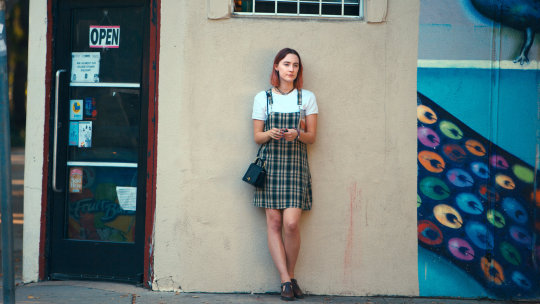
This movie just recently became an indie classic in 2017. Saoirse Ronan gives an incredible performance about a teenage girl that is constantly misunderstood by her family and friends. This targets the hipster narrative of wanting a new life and fresh start, since Lady Bird wants to go to college in New York. Millennial indie hipsters thrive in NYC, and these movies push the narrative.
Directors Thoughts: Greta Gerwig said that “I was actually on the subway in New York, and I heard two teenage girls talking. One of them said to the other one, I wish I could live through something. And I laughed, and I wrote it down. And I put it in the movie.” (https://www.npr.org/2018/02/19/587121715/-em-lady-bird-em-director-great-gerwig)
3. The Breakfast Club (1985)
Everyone knows and loves The Breakfast Club. Even though each character is different and falls into a stereotype (athlete, brainiac, the princess), everyone is in the same situation and “down in the trenches” together. This film also is the perfect style and music relating to hipsters. The colorful 1980s clothes combined with the soundtrack is perfect for the indie culture.
How do the fans feel? “All of us struggle with something in ourselves that we have to wrestle with and subdue to become the best, most harmonious versions of ourselves…The Breakfast Club shows that” (https://www.zacharyfruhling.com/philosophy-blog/philosophy-and-film-the-breakfast-club)
4. The Spectacular Now (2013)
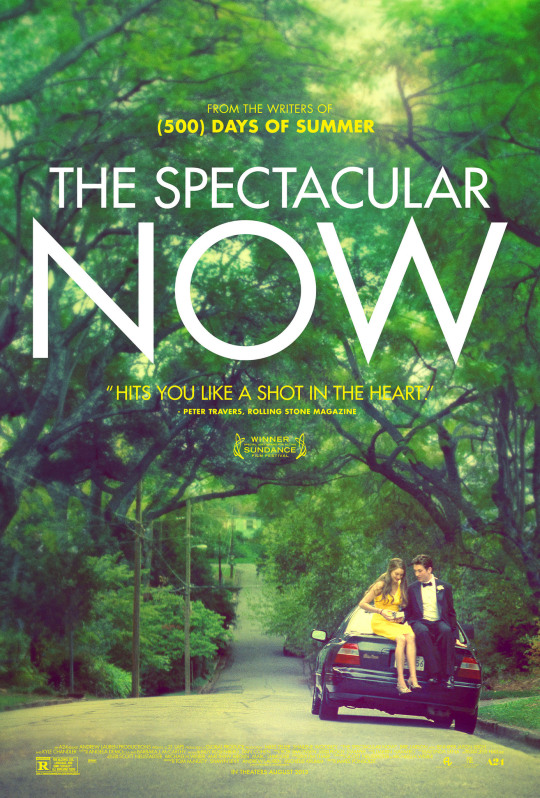
What a perfect movie that captures the hipster teen romance. The drastic contrasts between characters Sutter Keely and Aimee Finicky make them perfect for each other. They are each dealing with complicated relationships outside their own and try and work through cultural differences throughout the movie.
Interview with the Cast: (https://www.youtube.com/watch?v=-vQEIRjZZ5Y) The cast sits down at Sundance Film Festival to talk more in depth about their characters inner thoughts and how they interact with each other.
5. The Edge of Seventeen (2016)
Lastly, this movie highlights Nadine, a nerdy, loner, high school student who shows up to her teacher’s lunch hour to tell him she is going to commit suicide. Her best friends and family do not understand how much she struggles mentally and socially. Nadine represents the outsider perspective on individuals trying so hard to become part of that cool hipster group that everyone wants to be in.
youtube
From the Writer’s Perspective: “I really didn’t think of it in the context of a long line of teen movies. I really was just thinking about this particular person, Nadine, and wanting to explore what she was going through in a way that was truthful. It was never… for me, it was never about, “Oh, let me make sure I avoid these particular teen tropes!” or whatever. It was just, here’s my idea for this story and how do I tell it as honestly as possible? You know? And as specifically as possible” (https://www.slashfilm.com/the-edge-of-seventeen-interview/)
I hope these movies, whether you have seen them or not, can be added to the list of must-see Hipster Movies. They all contain those indie qualities that people can identify immediately when watching movies.
CITATIONS:
Anderson, J. (2012, September 08). TIFF capsule REVIEW: 'The perks of being A wallflower'. Retrieved March 07, 2021, from https://www.indiewire.com/2012/09/tiff-capsule-review-the-perks-of-being-a-wallflower-241733/
Cornish, A. (2018, February 19). Director Greta Gerwig on the parallels between her life AND 'LADY BIRD'. Retrieved March 07, 2021, from https://www.npr.org/2018/02/19/587121715/-em-lady-bird-em-director-great-gerwig
The edge of seventeen interview. (2016, November 16). Retrieved March 07, 2021, from https://www.slashfilm.com/the-edge-of-seventeen-interview/
Thrnetwork (Director). (2013, January 20). The cast of 'the spectacular Now' sundance 2013 [Video file]. Retrieved March 07, 2021, from https://www.youtube.com/watch?v=-vQEIRjZZ5Y
Zachary Fruhling. (2020, July 02). Philosophy and film: The breakfast club. Retrieved March 07, 2021, from https://www.zacharyfruhling.com/philosophy-blog/philosophy-and-film-the-breakfast-club
0 notes
Text
Samira Makhmalbaf: Young, Passionate, and Historic
In the year 2000, independent films were breaking out from the 90s into a new era. This new decade opened up the doors for new filmmakers and themes to hit the screen. Mostly up until this point, men dominated directing and producing independent films. There was not a lot of recognition for women, besides the actresses that starred in the films. One particular director that made her debut in 2000 and left a big impact is director Samira Makhmalbaf. Her feature films about international war and hardships combined with independent characteristics made her one of the most notorious woman directors of that year.
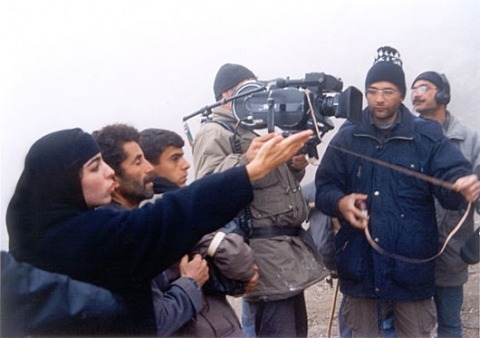
At only 20, Makhmalbaf directed her second feature film called “Blackboards” that released in 2000, a story about the political turmoil in Iraq and Iran that focuses on teachers making a journey to find children to teach, all while being refugees in a life-threatening environment. The title is symbolic because the main characters are carrying blackboards throughout the entire film, using them for reading, writing, and shelter from both natural elements and the Iranian army. At such a young age, this movie was ahead of its time. At the Cannes International Film Festival in 2000, Makhmalbaf won the grand jury prize for her work. According to The New Yorker, critics admired the way she portrayed violence, deprivation, and terror, as well as lessons that “could not be learned in books”. Richard Brody, a film reviewer for the magazine, says that “her ironic vision doesn’t deride education but affirms it as a basis for recording and transmitting experience—as a model for her own cinema.” Below you can see a scene from “Blackboards” so you can really understand the heavy weight and style of the storyline Makhmalbaf puts on. The video shows the teachers interacting with children in Iran who are unable to read or write.
youtube
In an interview with indieWire from 2000, Samira Makhmalbaf speaks on some of the unique elements of the movie and how she directed it. To begin, she hired nonprofessional actors. She wanted more authenticity and felt as though if the audience resonated and loved the characters, they would feel their pain more. She also took from their real experiences, mostly the realities of being a fugitive such as smuggling, stealing, and risking your life. The children in this movie were genuine, and truly believed that education was not important to their current lifestyle. Makhmalbaf comments, “When I make a movie, I don’t try to make a statement; I think of a question and I go to find why it is so. In this situation, it is the bad consequences of war”. She was one of the first female directors to combine political statements and atmospheres with creative and metaphorical elements. This movie was also apart of the new Iranian cinema. Modern contemporary films in this country sometimes were produced without the permission of authorities and censorship of the government. According to a review in The Guardian, Makhmalbaf “demonstrates a certain charm and innocence, whether or not it was a reflex in order to circumvent censorship” and shows a specific aptitude for the experience of children.
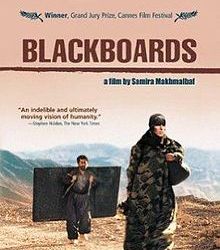
Overall, Samira Makhmalbaf proved 2000 to be her biggest year, and made a mark on both foreign and women’s cinema around the world. Her feature film “Blackboards” was a huge success and opened a door to a new independent style. This movie took only three months to film and dealt with an inexperienced cast and crew. It is amazing to see the hard work of Makhmalbaf and how she made a name for herself almost 21 years ago.

Citations:
Brody, R. (n.d.). The wunderkind Iranian director who stopped making films. Retrieved February 22, 2021, from https://www.newyorker.com/culture/the-front-row/the-wunderkind-iranian-director-who-stopped-making-films
Blackboards. (2000, December 29). Retrieved February 22, 2021, from https://www.theguardian.com/film/2000/dec/29/culture.reviews
Holden, S. (2002, December 06). An austere land with some poignant human beings. Retrieved February 22, 2021, from https://www.nytimes.com/2002/12/06/movies/film-review-an-austere-land-with-some-poignant-human-beings.html
Indiewire. (2002, December 09). INTERVIEW: Samira Makhmalbaf paints IT "BLACKBOARDS". Retrieved February 22, 2021, from https://www.indiewire.com/2002/12/interview-samira-makhmalbaf-paints-it-blackboards-80092/
1 note
·
View note